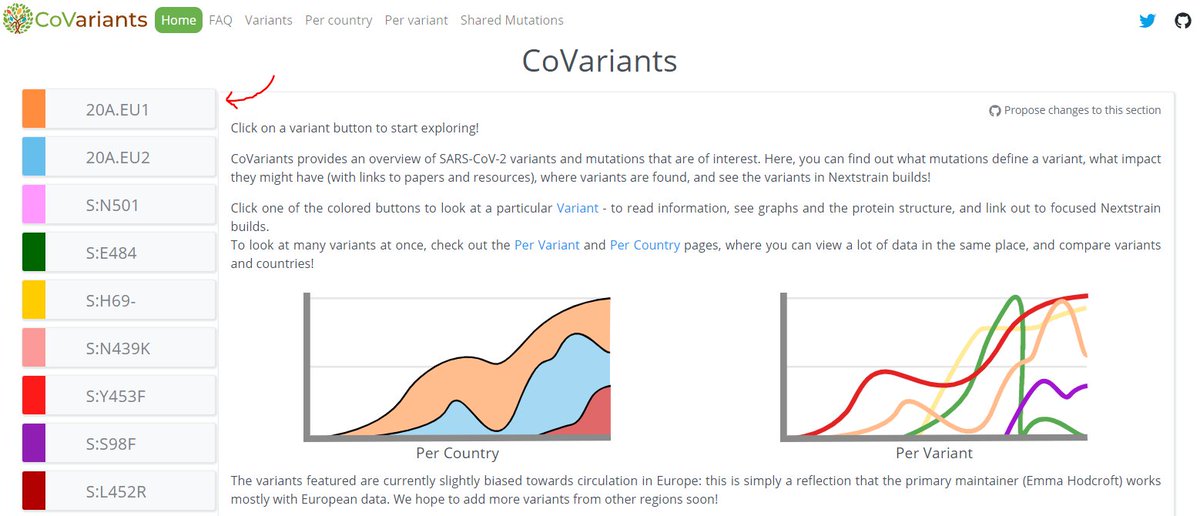
We found the same #SARSCoV2 mutation at position 677 in Spike has appeared at least 7 times in US-focused clusters in the past few months. What have we seen, & what does it mean?
New preprint out now! With @DDomman @macroliter @macroliter & more!
medrxiv.org/content/10.110…
1/17
New preprint out now! With @DDomman @macroliter @macroliter & more!
medrxiv.org/content/10.110…
1/17
Sparked by @macroliter & @DDomman independently spotting a rise in Q677P mutants in New Mexico & Louisiana, we teamed up & started investigating!
We noticed an increase in both Q677H and Q677P mutants around the world and within the USA, in particular since autumn 2020.
2/17
We noticed an increase in both Q677H and Q677P mutants around the world and within the USA, in particular since autumn 2020.
2/17
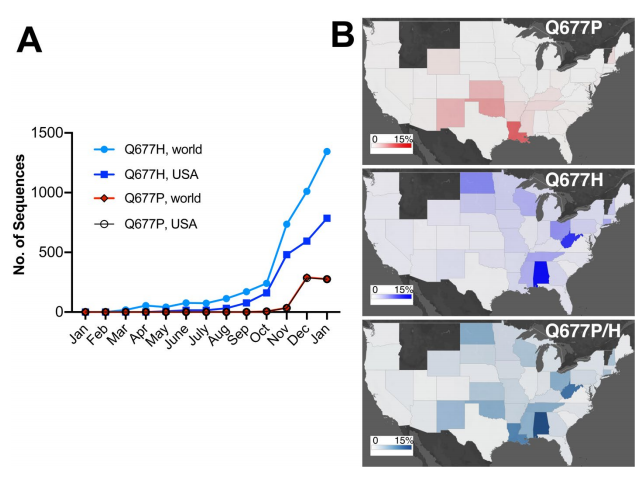
On a S:Q677-focused Nextstrain build, it quickly became apparent that there were multiple separate branches where Q677 mutants had arisen independently. We focused in on those in the USA.
Nextstrain build, filtered to 677H & P in the USA: nextstrain.org/groups/neherla…
3/17

Nextstrain build, filtered to 677H & P in the USA: nextstrain.org/groups/neherla…
3/17
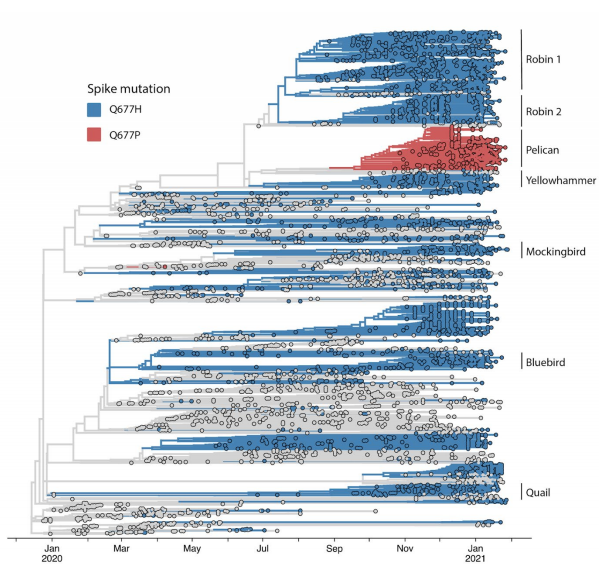
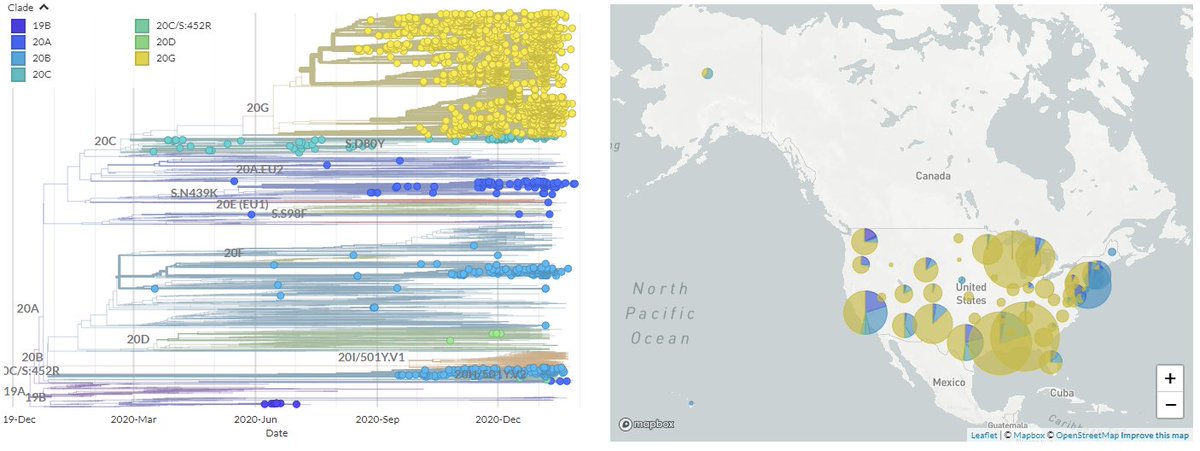
This 'cartoon' phylogeny shows clearly how the 7 different clusters identified in the US differ. 6 are changes to 677H, but 4 do this via change to T at nucleotide 23593, where 2 do this with a C at the same position.
1 variant changes to 677P with a change to C at 23592
4/17
1 variant changes to 677P with a change to C at 23592
4/17

Why are they named after birds? Since so many share the same AA mutation, names relying on this weren't working! We were keen to avoid geography-based names like 'Florida variant,' so we picked American birds! This isn't intended to be a new system - just useful nicknames!
5/17
5/17
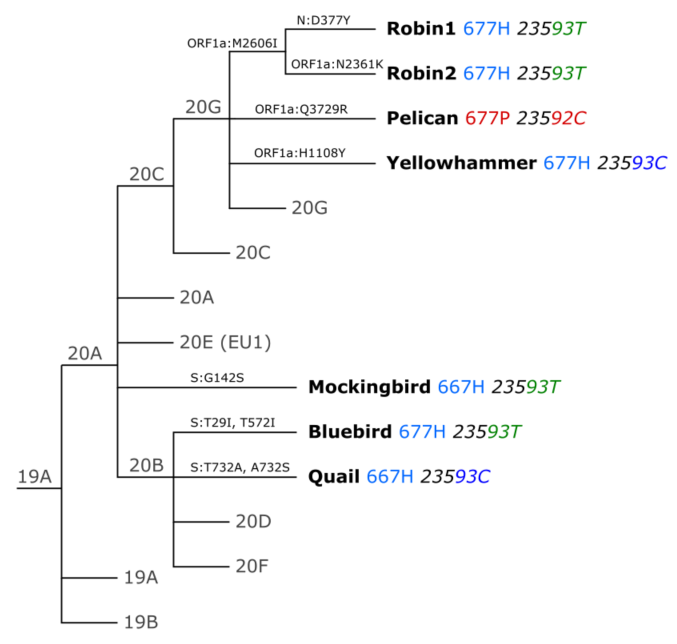
@macroliter made this absolutely stunning figure that shows all the mutations we see in each of the lineages
Note that as shown in the previous tweet, the Robins, Pelican & Yellowhammer stem from 20G so share many mutations by virtue of a common ancestor.
6/17
Note that as shown in the previous tweet, the Robins, Pelican & Yellowhammer stem from 20G so share many mutations by virtue of a common ancestor.
6/17
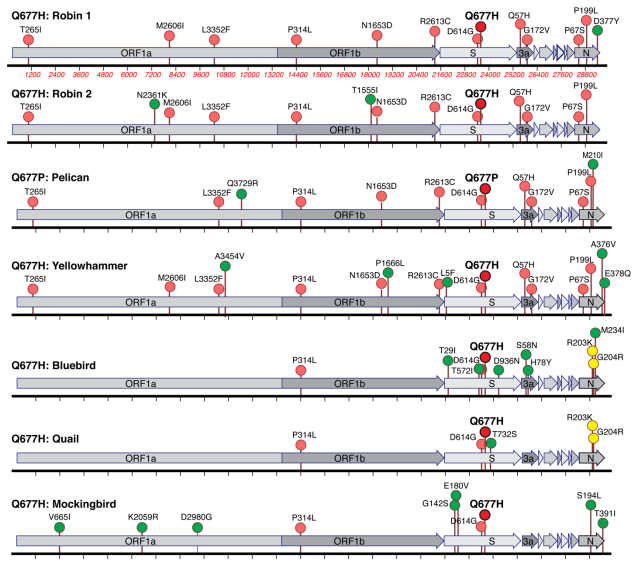
However, we are distinctly seeing this S:Q677 mutation appear multiple times. What does that mean? As covered by this great @nytimes article by @carlzimmer, this seems like it might be an example of 'convergent' or 'parallel evolution'.
7/17
nytimes.com/2021/02/14/hea…
7/17
nytimes.com/2021/02/14/hea…
This means that the mutation may offer some kind of benefit to the virus, so that when it appears (mutations appear pretty randomly) it's being positively selected, so we see its frequency growing.
(For an explanation of convergent & parallel see
8/17
(For an explanation of convergent & parallel see
https://twitter.com/vscooper/status/1361053171418877952!)
8/17
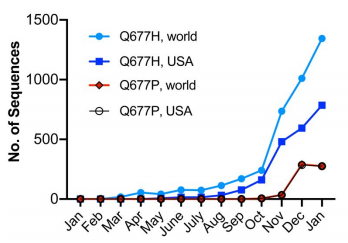
*Importantly*: We don't see anything like the dynamics of variants of concern (VoCs) like 501Y.V1 (B.1.17) or 501Y.V2. It's also not clear there should be any immunity impact or change in clinical outcome.
But it tells scientists that this is a location we want to watch!
9/17
But it tells scientists that this is a location we want to watch!
9/17
And that's exactly what we plan to do in the next stages of our analyses: start tests to compare how variants with S:Q677 mutants compare to those without!
677 lies near the 'furin cleavage site' which is critical to 'making' Spike, so it could play a very real role.
10/17
677 lies near the 'furin cleavage site' which is critical to 'making' Spike, so it could play a very real role.
10/17
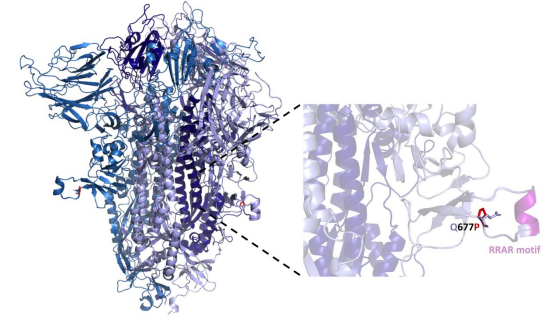
And though our analysis here focuses on the US, we see 677 mutations more widely, too.
One example is the lineage recently designated B.1.525
(see it on the dedicated S:E484 build here nextstrain.org/groups/neherla…)
11/17
One example is the lineage recently designated B.1.525
https://twitter.com/arambaut/status/1360164332508749824
(see it on the dedicated S:E484 build here nextstrain.org/groups/neherla…)
11/17
Another interesting example is in a 19B 're-emerging' cluster. (Read more about these here:
In a 19B cluster with S:N501Y, we see some of these also have S:Q677H (in grey below)
See them on the 501 build here: nextstrain.org/groups/neherla…
12/17
https://twitter.com/firefoxx66/status/1357761931348688896)
In a 19B cluster with S:N501Y, we see some of these also have S:Q677H (in grey below)
See them on the 501 build here: nextstrain.org/groups/neherla…
12/17
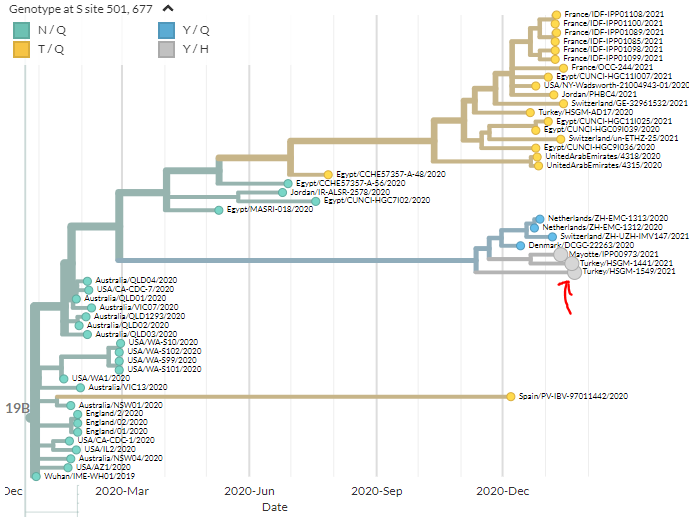
So what does all this mean? Mostly, I think it's a reminder that just as our own responses to #SARSCoV2 adapt & change, the virus continues to adapt, too. And that we have a lot to learn from a better upstanding of why we see some mutations again & again.
13/17
13/17
Not only will we benefit from understanding what mutations do & how they impact spread & outcome, but from learning *what* environments & forces lead to these changes. General adaption to humans? Responses to rising immunity? Straightforward gains in transmission?
14/17
14/17
All of this work is thanks to fantastic international & inter-state collaboration made possible by the connections fostered through the @CDCgov's SPHERES group! (Shoutout to @dmaccannell!) And is a great examples of 'powers combined' to uncover interesting stuff!
15/17
15/17
I also want to point out that this is work where everyone involved was critical - huge thanks to all co-authors as well as @lsuhsevtlab & @MiGScenter!
For a more complete 'thanks' thread please see @macroliter's below!
16/17
For a more complete 'thanks' thread please see @macroliter's below!
16/17
https://twitter.com/macroliter/status/1361160879866265603
Finally, I couldn't finish without 1 more nice @nextstrain tree - a zoom in on Pelican (S:Q677P) & where it's found across the US. Pelican kicked all of this off by appearing on the radar of @DDomman & @macroliter!
See on the Q677 build here: nextstrain.org/groups/neherla…
17/17
See on the Q677 build here: nextstrain.org/groups/neherla…
17/17
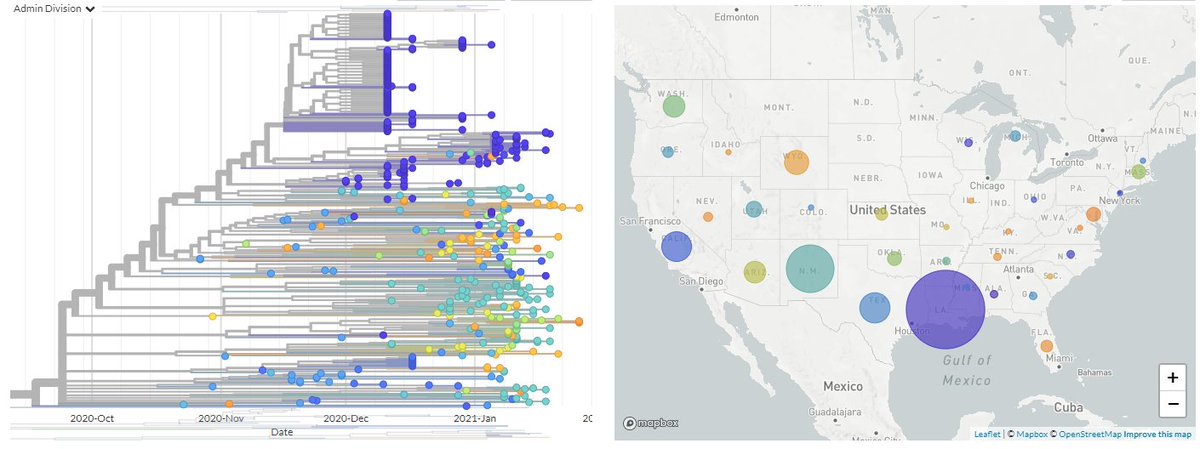
• • •
Missing some Tweet in this thread? You can try to
force a refresh











